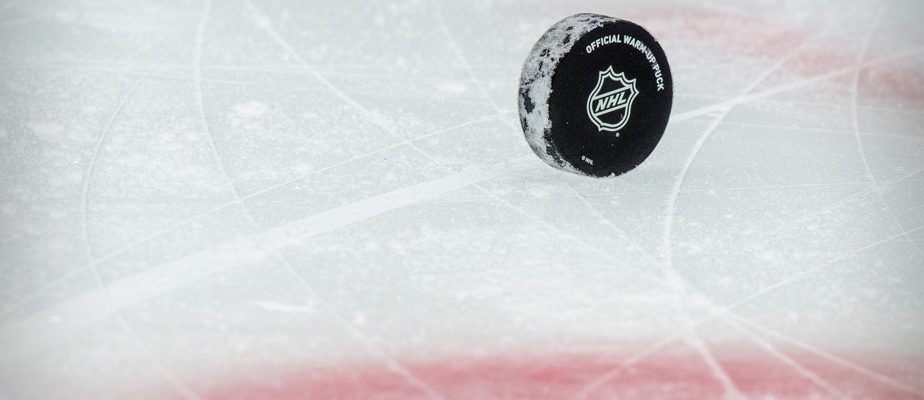What if, rather than sinking to the bottom of the standings, teams that won’t play in the playoffs were to win as many games as possible at the end of the season in order to improve their draft picks?
This is the formula used by the Professional Women’s Hockey League (LPHF) for its inaugural season. We will not rely on reverse rankings, nor will we let a lottery decide who gets the first selection in the draft. Of the two teams (out of six) which will not reach the playoffs, it is rather the one which accumulates the most points in the standings after its exclusion date which will literally win the first round of speaking.
Although nothing points to the adoption of such a mode of operation in the NHL, The Press wondered how it would have affected the pick order in the last two drafts. The answer: the upheaval would be total.
In 2022, the Canadian would have slipped from first to fourth place. We can therefore bet that Juraj Slafkovsky would no longer have been available. In 2023, the CH would have lost two levels, going from fifth to seventh if, as in the LPHF, the “Gold plan” had been in force. Here too, we should undoubtedly have mourned David Reinbacher.
This method was first suggested in 2012 during a conference on analytical tools in sport. Adam Gold, then a doctoral candidate in statistics at the University of Missouri, outlined this model for preventing self-sabotage—the tanking, in English. In 2016, Shane Doan, forward for the Arizona Coyotes, promoted this idea. Since then, it has occasionally been brought back into the discussion by certain commentators, but nothing more. The LPHF, however, felt this was the way to go.
However, the effect of the “Gold plan” could be limited there. Given the size of the circuit, the number of games played (24) and the fact that each victory in regulation time is worth three points, it is possible that all six organizations will still be in the game until late in the season.
In the NHL, it’s the opposite. The Chicago Blackhawks, for example, will be mathematically eliminated over the next few days, perhaps as early as this Saturday. At this point, even if they won all of their remaining games, the Hawks would not be able to amass enough ranking points to join the team that provisionally holds the last place giving access to the playoffs.
Impact
We were therefore interested in the impacts that the “Gold plan” would have had on the last two seasons of the NHL by calculating the number of points that each team in the top -8 in the draft amassed after having lost all chance of participating in the playoffs. .
The Canadian finished the 2021-2022 season in last place in the general classification. This long campaign of misery resulted in 18 long contests fought without stakes. During these 18 duels, the CH amassed 11 points with a record of 5-11-1.

Given its positioning, the Montreal organization inherited the best probabilities (25.5%) for the lottery deciding the first choice in the draft. Lottery she won.
Under the “Gold plan”, the Habs would have rather chosen fourth, after seeing the Arizona Coyotes and the Seattle Kraken (12 points each), but especially the Ottawa Senators (15 points), pass in front of it . The Ottawans (7-5-1) had indeed had a thunderous end to the season.

The CH would also have lost feathers in 2022-2023, but to a lesser extent. In seven post-elimination games, he only had two points. The “Gold Plan” would then have seen him get the seventh pick in the draft, rather than the fifth, as was the case.
The debacle would have been even worse in Anaheim, with two points in nine games, while the Columbus Blue Jackets would have been the champions of this late run, with 14 points in 10 games.
These projections should obviously be taken with a grain of salt. Organizations could have managed their training differently if they had evolved in this system, for example by slowing down transactions or delaying surgeries for star players. This exercise is therefore only speculative.
Enthusiasm
However, we asked four NHL team administrators their thoughts on the “Gold Plan”. Three of them spontaneously got excited. The fans would benefit from it, it is said, and the coaches too. This way of doing things would in fact give value to the last meetings of the season, which would prevent weariness from setting in.
One manager showed more reserve, highlighting how disruptive the market for “rental” players would be as the trade deadline approaches.
Take the example of the Anaheim Ducks, currently sitting at 30e rank in the overall league ranking. We can predict that they will trade, by next Friday, some of their good players — Adam Henrique and Frank Vatrano, first and foremost. Under the “Gold plan”, the dilemma would be real: exchange them while maximizing the return, or keep them to conclude the calendar in force?
No solution is perfect, because players, especially those with short-term contracts, “don’t care about the first pick in the draft,” we are told. Especially if they are called upon to change organizations during the summer, they will prefer to finish their season in a club that aspires to the playoffs, or even the Stanley Cup.
In this sense, we would move the current problem, while all the players of a bottom ranking team suffer the consequences of the defeats which accumulate at the end of the season without guarantee of benefiting from the benefits of a high choice or of a successful reconstruction.
Nothing is perfect, in short, and any system will create dissatisfaction. Until proven otherwise, the NHL lottery is here to stay. However, if we ever wanted to instill a little chaos, the “Gold plan” would just beg to be tried.
